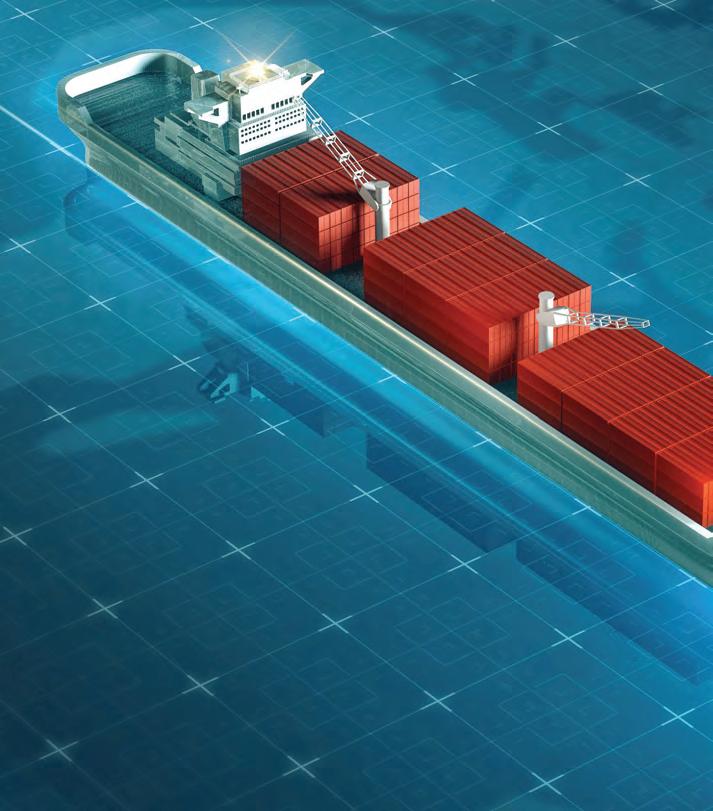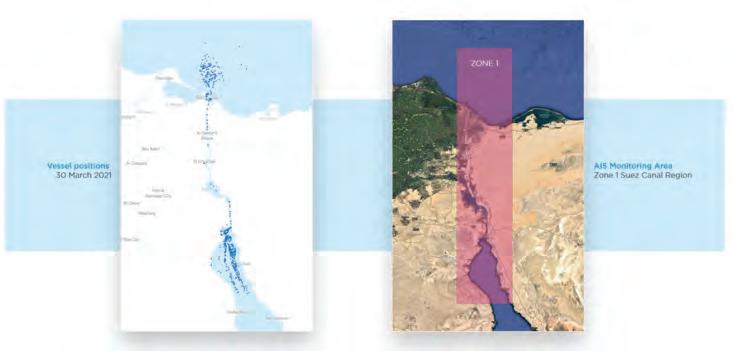
5 minute read
Real-time data
The influence of real-time data on active risk management cannot be understated.Understanding behaviour as it happens allows underwriters to have an ‘always on’ approach to risk management. Data can be interpreted as soon as it is received, providing an ongoing understanding of asset behaviour. This changes an insurer’s approach to policy structure, helping create new products that better serve the market. Sam Mellett, Senior Product Manager, Concirrus, explains
Real-time data and improved visibility of insured assets enable the creation of products such as ‘connected policies,’ that follow a flexible structure based on supporting technology. Connected policies compliment the timely view of risk that dynamic data aggregation and analysis platforms provide.
The information used in policy creation for marine accounts can be derived from various sources. The more accurate the data, the more appropriate the policy.
At Concirrus, we aggregate vast proprietary and third-party datasets to monitor vessels globally. This data underpins our active risk management capability within Quest Marine, providing a simple solution to assess vessel activity. active risk management is important because it can improve loss prevention efforts and accelerate response times. Stakeholders can use Quest Marine to track the location and path of vessels, monitor accumulation within self-determined zones, identify specific port activity and set custom alerts.
NET LOSS REDUCTION
Alerts and location monitoring form the backbone of connected policies. Alerts are automated based on predefined criteria and can be sent to those in other departments. This means a response can begin as soon as a breach in policy criteria occurs. Reacting quickly reduces net loss by ensuring adequate changes are made to the policy or behaviour during unforeseen activity.
Sanctions, war and piracy zones are all strong examples of when alerts are used. New areas of risk can be defined ad hoc within Quest Marine as soon as they emerge. This ensures activity and accumulation can be assessed within selfspecified areas of interest.
If a vessel moves into an area of interest, its activity can cause an automated response to update its policy. Automation improves the delivery time of necessary changes, reducing inadequate cover and therefore exposure. Automated workflows also free up more time to manage client relationships, driving competitive advantage.
Real-time data as an enabler of active risk management
Underwriting with the benefits of a big data analytics and insight platform offers a number of benefits. Using the same platform as brokers gives underwriters access to the same datasets and an equal view of risk. Understanding behaviour as it happens allows underwriters to have an ‘always on’ approach to risk management. Therefore, when negotiating business, underwriters are more informed before writing a policy and remain informed throughout the life of the policy.
When deciding to write a piece of business or not, the conversation with brokers fundamentally changes. Real-time analysis ensures the visibility of behavioural trends over time, ensuring judgements are based on correlations over snapshots. This includes trends based on initiatives a broker may have regarding improvements to client risk profile.
Policies can take shape around set initiatives. Automated updates can initiate new terms and conditions that align with agreed milestones. A new structure to policies can broaden the scope of what types of risk an underwriter is prepared to write.
This can improve broker relations through increased policy uptake. It also filters out high risk brokers by rewarding those who can demonstrate a consistent improvement in risk through time. Digital tools that monitor vessel activity enable underwriters to enforce such terms, thereby reducing exposure.
NEW GROWTH OPPORTUNITIES
Monitoring the insured’s asset(s) is key to an ‘always-on’ approach. If a vessel were to display adverse behaviour, underwriters could act. For example, turning up the engine while trying to make up for lost time during a delivery. The act of increasing speed may put additional stress on the engine. If there is an increased potential of a fault, the underwriter can look at the relative cost of making the delivery against paying the late cost. If the late cost is lower, an underwriter can offer to cover it instead. Doing so would avoid the high maintenance costs associated with being on time. Real-time weather monitoring can also ensure geographical risk profiles are up to date. As geographical areas see increased rates because of meteorological risk, policies can adapt automatically to ensure the right coverage is in place. Such data directly influences pricing models, with rates in place that correlate to ever-changing, high-risk geographies.
As vessels enter and leave zones, they can either incur a fixed increase in premiums or opt for a flexible approach. Again, this provides a new product that adapts to the needs of specific operators.

CUSTOM ZONE MONITORING
Vessel positions 30 March 2021
AIS monitoring area Zone 1 Suez Canal region
The Ever Given incident is a high-profile example of why aggregations are important. The graphic shows the simplicity of monitoring accumulation in the region by creating a custom zone.
Sam Mellett, Concirrus
Geographical monitoring does not, however, only apply to asset behaviour. A connected approach to accumulation can also provide benefits for reinsurance. If you see a peak in accumulation, an extra reinsurance layer can be adopted automatically. This introduces further capital for the duration required.
In fact, improvements in reinsurance may be seen through more effective segmentation. With digital tools, underwriters can effectively segment areas of a policy they may find too risky and only write the segments they are comfortable with. This approach can also be applied to the reinsurance market, in which insurers package segments of risk to further insure. The value comes from the level of segmentation and analysis now available. This allows new capital sources to be selected, such as ILS markets.
Drawing new capital provides further growth opportunities for businesses that adopt new digital tools. Better tools enable underwriters to adapt to new market pressures through automation and understanding. for those in the maritime industry. If a vessel is deemed unseaworthy, because of its owner’s failure to obtain an IEEC when required to do so, insurance policies covering the vessel, and the charterer’s liability, may be seriously affected. This could then precipitate concerns for vessel financiers, who normally mandate that adequate marine hull and hull war insurances and P&I cover is maintained at all times, for the vessel they are financing.










